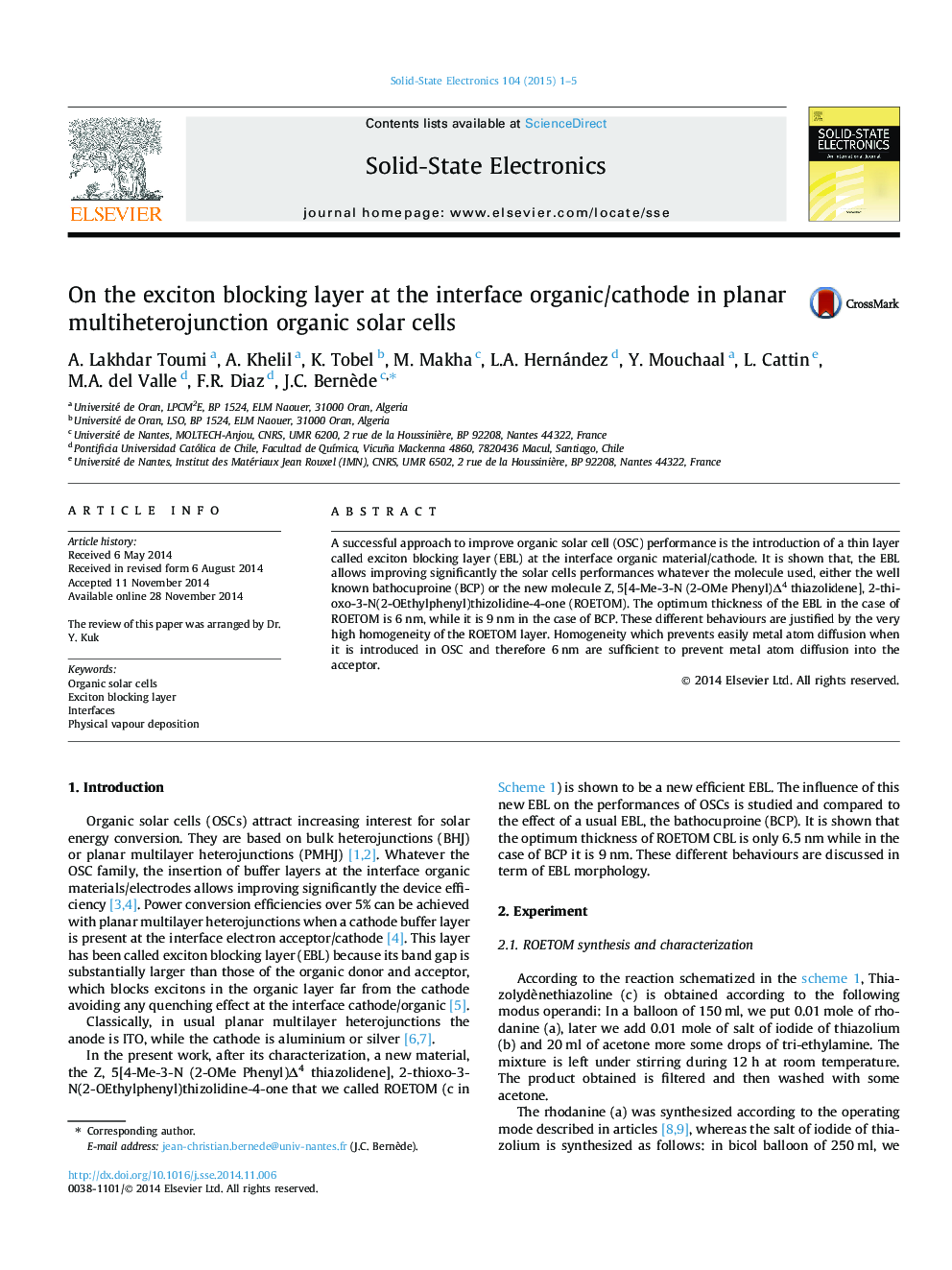| Article ID | Journal | Published Year | Pages | File Type |
|---|---|---|---|---|
| 747954 | Solid-State Electronics | 2015 | 5 Pages |
•Use of ROETOM as new exciton buffer layer in organic planar heterojunction.•The thickness of an efficient exciton buffer layer depends on its homogeneity.•ROETOM gives very highly homogeneous thin films.•The optimum thickness of ROETOM is only 6.5 nm.
A successful approach to improve organic solar cell (OSC) performance is the introduction of a thin layer called exciton blocking layer (EBL) at the interface organic material/cathode. It is shown that, the EBL allows improving significantly the solar cells performances whatever the molecule used, either the well known bathocuproine (BCP) or the new molecule Z, 5[4-Me-3-N (2-OMe Phenyl)Δ4 thiazolidene], 2-thioxo-3-N(2-OEthylphenyl)thizolidine-4-one (ROETOM). The optimum thickness of the EBL in the case of ROETOM is 6 nm, while it is 9 nm in the case of BCP. These different behaviours are justified by the very high homogeneity of the ROETOM layer. Homogeneity which prevents easily metal atom diffusion when it is introduced in OSC and therefore 6 nm are sufficient to prevent metal atom diffusion into the acceptor.
